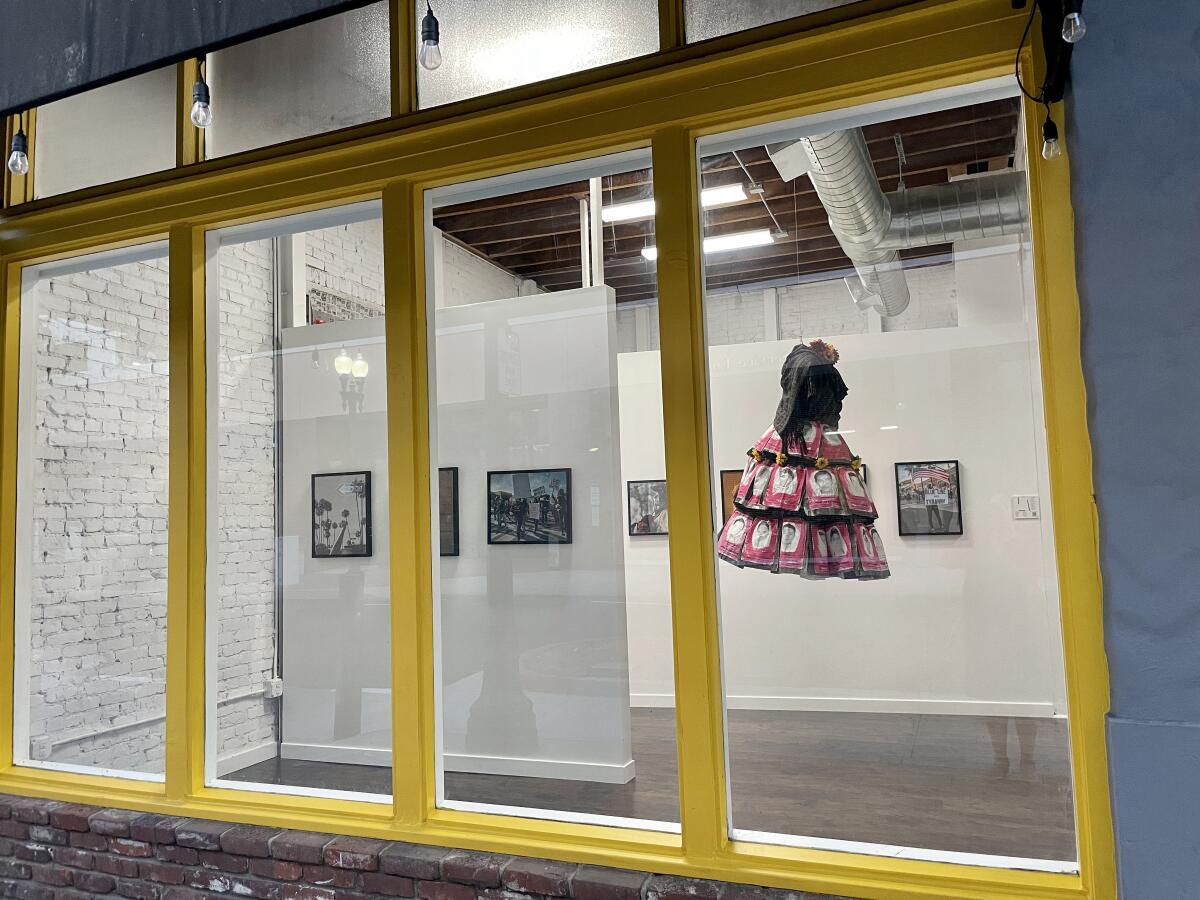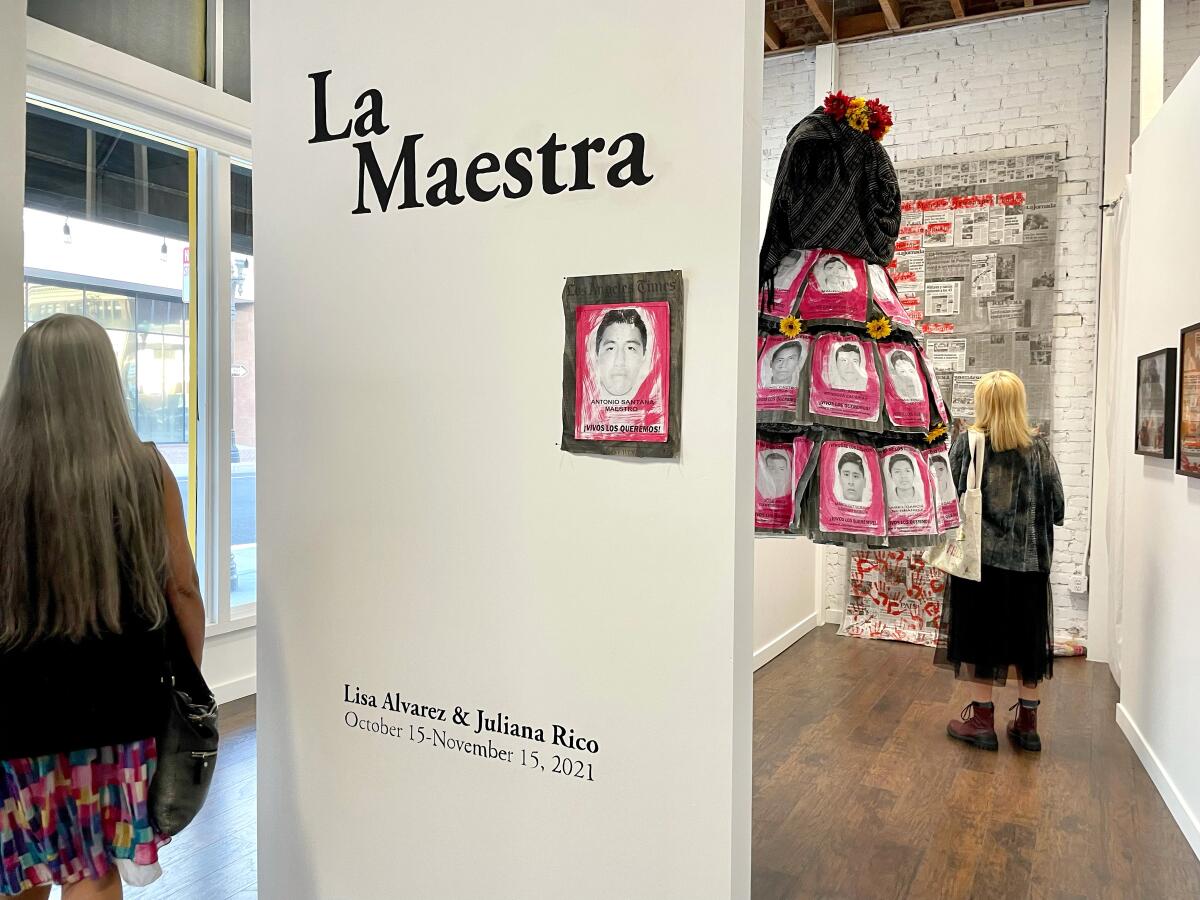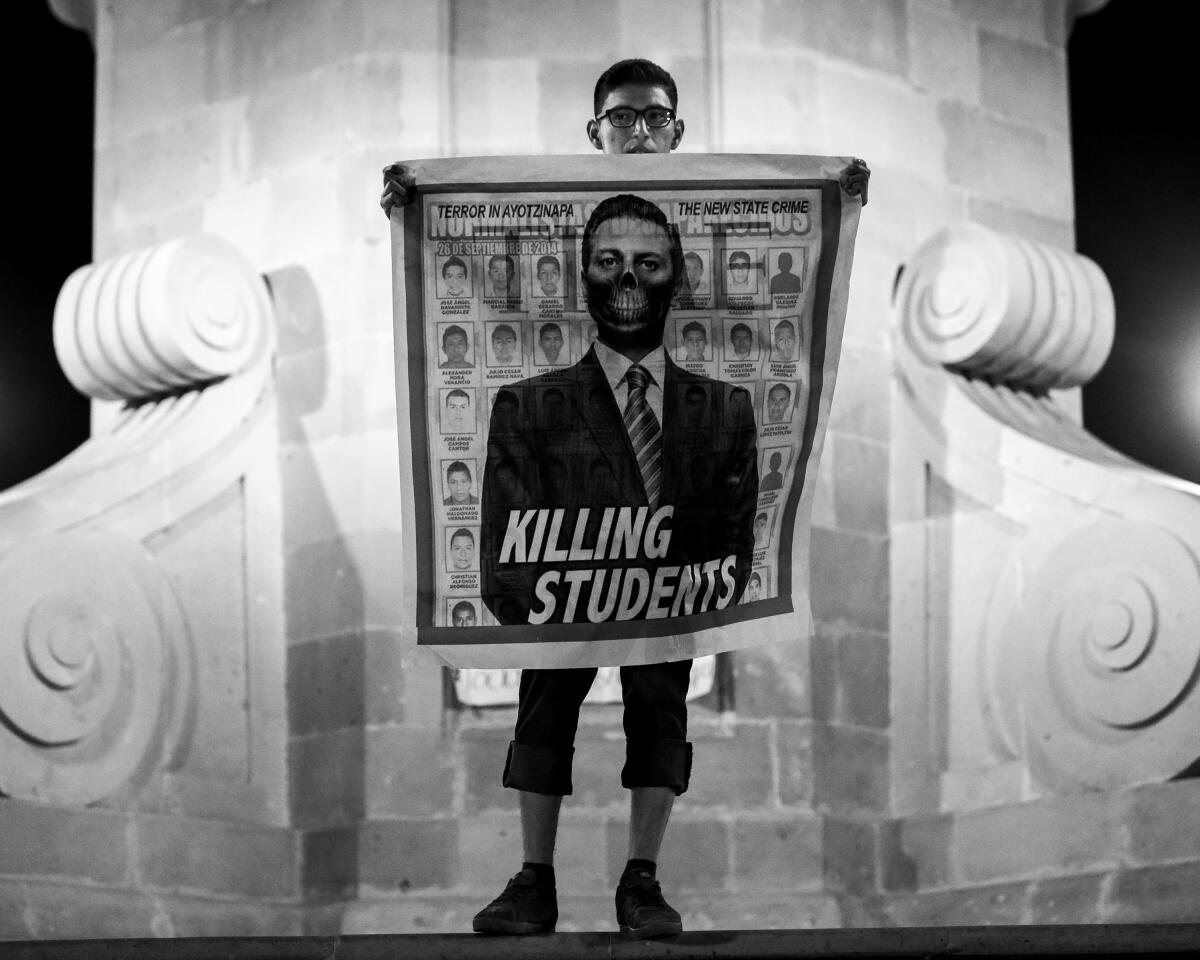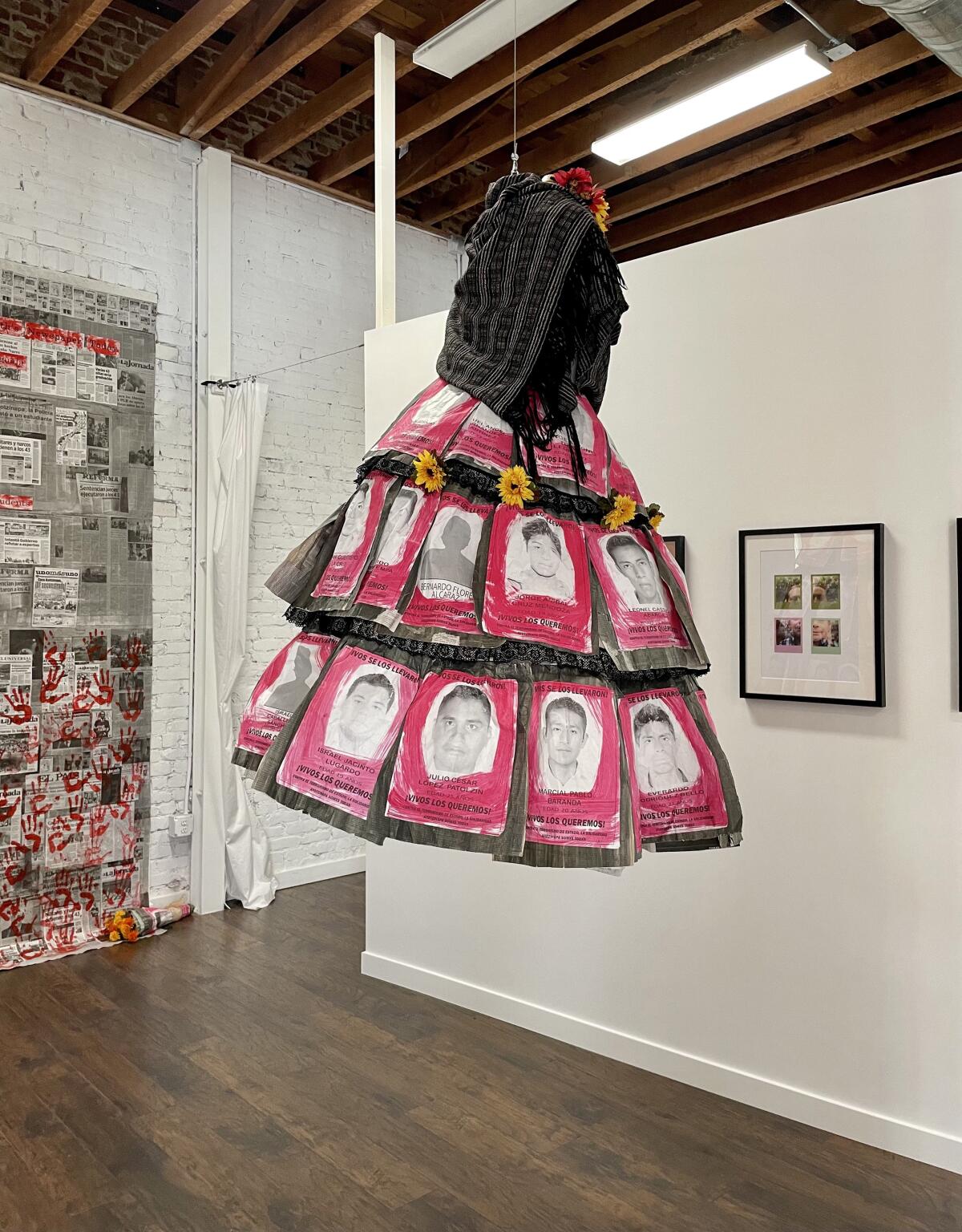‘La Maestra’ at Santa Ana’s Crear Studio teaches important lessons

In September 2014, 43 Mexican students disappeared in Guerrero state on their way to a protest in Iguala. The students were studying at an all-male teacher-training college in the town of Ayotzinapa. In the days that followed their disappearance, corruption seemed responsible, and their deaths highly probable.
The story of the Ayotzinapa 43, as they became known, has haunted artist and educator, Lisa Alvarez.
“Once the students disappeared I just became obsessed with the case for all sorts of reasons, but I think primarily because I was a teacher and they were students,” said Alvarez, who has taught at Irvine Valley College for more than 20 years. “They were students studying at a rural school in Mexico, studying to be teachers, and they were part of a school system that existed since the Mexican Revolution to educate teachers in the poorest and remotest parts of Mexico. That’s who those students were.”
The art Alvarez created out of both grief and anger for the Ayotzinapa 43 is on display at Santa Ana’s Crear Studio as a part of the exhibition, “La Maestra,” a mixed-media show that “reflects on loss, resistance and the role of students and educators in times of violence and change.”
Using an underskirt she found at a Lutheran thrift store, Alvarez constructed a garment of newspaper clippings and photos of the student victims. Each informational flyer outlined in red creates a ruffle on the skirt that carries the weight of the tragedy it bares witness to.

When she created the garment in 2014, she donned the skirt and walked the streets of Downtown Santa Ana at the city’s annual Noche de Altares event.
“I really did not realize what I created until I hit the street that first night,” Alvarez said. “Especially because the incident was so fresh. People knew immediately, especially that year, what it was.”
Alvarez became a folkloric figure of sorts, a walking ghost story that stopped people dead in their tracks. She sometimes painted the palm of her hand red, and when she raised it up to onlookers, it held disarming and powerful symbolism.
“I am a big fan of using the body to make a powerful witness in a public place,” said Alvarez.
Alvarez wore the skirt in a student march to the Mexican Consulate that year and in the streets of Santa Ana each year after. She said she even wore it once at IVC.
“I did wear it in class one day, making a spectacle of myself on campus,” Alvarez said. “But I want to say that is what performance art does. Instead of people going to a gallery, you take the art to where the people are.”
With the continuing COVID-19 pandemic, Alvarez decided to display the garment so the tradition could continue. She reached out to Sarah Rafael García, gallery director at Crear Studio and a former student of Alvarez.
“Lisa had contacted me to ask about how she would go about archiving her garment because she just didn’t see herself going into crowds after the pandemic but still felt very strongly about the representation of the Ayotzinapa 43 students,” said García.
García remembers Alvarez as her own maestra and the impression she made.
“We all remember the first teacher who impacted our lives, mine was Lisa Alvarez,” said García. “She was my first Mexican American teacher at community college.”
(Full disclosure: Alvarez was my maestra as well, for a semester of creative writing at IVC. She wasn’t my first Mexican American teacher; she was my second. I had Mrs. Barajas for eighth-grade science and had to wait until I took a post grad class for fun to get another Mexican American teacher.)
García also tapped educator Juliana Rico for the show.
“A few years ago, I met Juliana Rico guiding young photographers to document the streets of Santa Ana,” García said.
Rico has taught photography for nearly 10 years at CSU Fullerton, Chaffey College, Santa Ana College, Golden West College, and most recently at Cal Poly Pomona. Rico has curated eight Santa Ana-based photographers to feature in the exhibition. They are all students Rico has mentored, and their work reflects social movements and celebrations through documentary photography.

Garcia said both Alvarez and Rico remind her how educators teach more than lessons.
“They make artists, relevant role models and historians — their social practice deserves to be honored in loss and triumph,” said Garcia.
For the showing of the skirt, Alvarez made restorations, as she does each year.
“Every year I repair it. It really is made of newspaper that is painted and sewn together,” Alvarez said. “I take all the young men off and sew them all on again. And I think part of that repair and restoration is part of the project of thinking and remembering what an enormous kind of atrocity this was, to handle each one.”
Alvarez has also added to the garment.
“This year for the purposes of its appearance in the gallery, because it is suspended and that way people can see it in a different way, I added a full new underskirt of this years news. So if you lift up the panels, you will see what is happening in the world today,” said Alvarez. “I like that sort of message, that the stories go on, the news goes on and there is always more.”

Since Alvarez won’t be walking the street of Santa Ana this year, she plans to pop-up on Nov. 6 during Santa Ana’s Viva La Vida event.
“I am going to take my trusty Singer sewing machine to the gallery, and I have been saving newspapers,” she said. “I hope to help people come into the gallery and walk out with some kind of garment or memento ... my working plan is to make face masks so they can walk out with a story from recent news on their face.”
Today, we know the story of the Ayotzinapa 43 ended in tragedy due to alleged criminal conspiracies that included the military, the government and organized crime. The students allegedly were taken into custody by municipal police officers who handed them over to the drug cartels. The remains of only three students have been found, and there is little accountability for those responsible or closure for the families of the victims.
For Alvarez, there are lessons there too.
“Every generation, it seems to me, has to save the world for themselves and the future. I think that is what those students were trying to do in that tragic moment.”
“La Maestra” runs through Nov. 15 during exhibition hours Thursdays and Fridays 4 to 7 p.m., Saturdays 12 to 4 p.m. and by appointment all other days.
All the latest on Orange County from Orange County.
Get our free TimesOC newsletter.
You may occasionally receive promotional content from the Daily Pilot.




